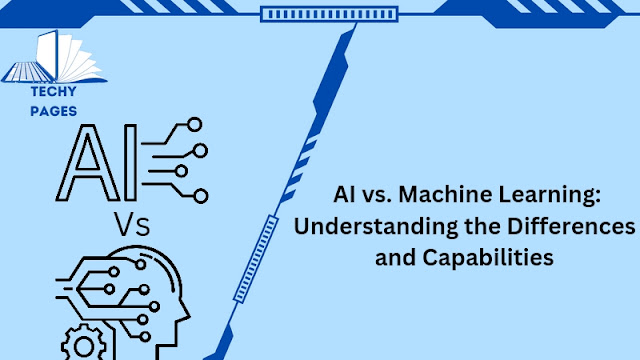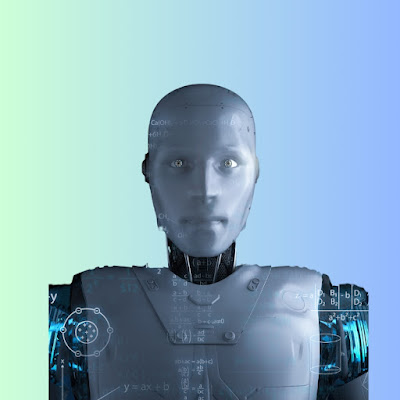Two terms have received a lot of attention in the field of current technology: artificial intelligence (AI) and machine learning (ML). Despite their apparent similarity, they actually stand for separate ideas with different functions and uses. In this post, we will examine the similarities, differences, and constraints between AI vs. machine learning.
AI vs. Machine Learning: Understanding the Differences and Capabilities:
• Introduction to AI and Machine Learning:
1.What is Machine Learning?:
Machine learning is a branch of artificial intelligence that focuses on creating algorithms and statistical models that let computers pick up new skills and improve on existing ones without having to be explicitly programmed. Making predictions or judgments based on data patterns is at the heart of machine learning.
2.Understanding Artificial Intelligence:
The goal of artificial intelligence, on the other hand, is to develop intelligent beings that can emulate human cognitive processes and decision-making abilities. AI's ultimate objective is to equal or perhaps surpass human intelligence in a variety of fields.
3. Supervised vs. Unsupervised Machine Learning:
Involving humans in the training process is a key distinction between supervised and unsupervised machine learning. The foundation of supervised learning is labeled data, where humans provide the computer with input and the desired results. Unsupervised learning, in contrast, may identify patterns and connections in data without direct human intervention.ta without explicit human oversight.
- The Power of Machine Learning:
1.Learning and Inferring from Data:
2.Unraveling Patterns and Relationships:
Machine learning can unravel complex patterns and relationships within vast datasets, providing valuable insights for businesses, researchers, and decision-makers. The ability to recognize hidden correlations allows machines to identify trends that humans might overlook, leading to data-driven decision-making.
- Types of AI:
1.Natural Language Processing (NLP):
NLP is a subfield of AI that studies the interplay between computers and human language. It allows machines to hear, analyze, and respond to natural language, resulting in substantial advances in voice assistants, language translation, and sentiment analysis.
2.Vision AI:
The formation of vision AI algorithms enable machines to interpret and comprehend visual data such as images and videos. This technology has been employed in applications like as facial recognition, object detection, and self-driving cars.
3.Robotics and Physical Tasks:
Robotics is a branch of artificial intelligence that focuses on the design, manufacture, and programming of robots capable of performing physical tasks. Robots equipped with artificial intelligence and machine learning may investigate their surroundings, manage objects, and even collaborate with humans in a range of industries.
- Deep Learning: Unleashing the Potential:
1. Leveraging Insights through Deep Learning:
2. Acknowledging Data Reliability:
While deep learning can provide powerful insights, it is essential to consider the reliability and quality of the data used for training. Biases, inaccuracies, or insufficient data can lead to erroneous conclusions and hinder the overall effectiveness of AI systems.
- Understanding AI and ML: Beyond Complex Equations:
1 Grasping the True Capabilities:
Complex mathematical equations are only one aspect of AI and machine learning. They serve as the computational systems' embodiment of human knowledge, learning, and decision-making. We can understand their potential impact on society and industry by becoming aware of their genuine capabilities.
2.Embracing Limitations:
AI and machine learning do not exist in a vacuum; they have constraints. They cannot take the place of human imagination, compassion, and intuition. To prevent irrational expectations and promote ethical AI development and deployment, it is essential to be aware of these limitations.
- Conclusion:
AI and machine learning are transformational technologies that have the potential to disrupt a wide range of industries. Machine learning allows computers to learn from data and make informed decisions, whereas artificial intelligence (AI) strives to construct intelligent creatures that resemble human cognition. They have paved the path for breakthroughs in natural language processing, visual AI, robotics, and deep learning.
As we embrace the promise of AI and machine learning, we must keep data dependability, ethical considerations, and the limitations of these technologies in mind. Responsible development and implementation are essential for realizing their full potential for a better, more efficient future.





